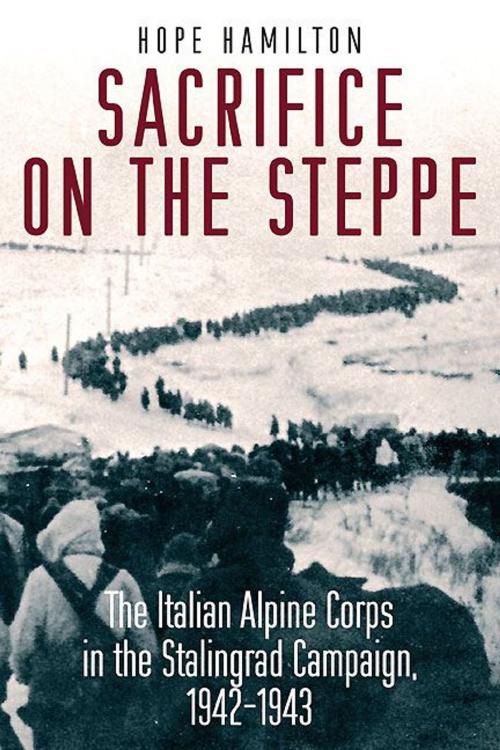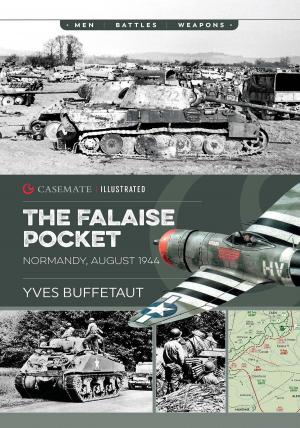Sacrifice on the Steppe: The Italian Alpine Corps in the Stalingrad Campaign, 1942-1943
The Italian Alpine Corps in the Stalingrad Campaign, 1942-1943
Nonfiction, History, Military, World War II, Biography & Memoir, Historical| Author: | Hope Hamilton | ISBN: | 9781612000138 |
| Publisher: | Casemate | Publication: | June 8, 2011 |
| Imprint: | Casemate | Language: | English |
| Author: | Hope Hamilton |
| ISBN: | 9781612000138 |
| Publisher: | Casemate |
| Publication: | June 8, 2011 |
| Imprint: | Casemate |
| Language: | English |
When Germanys Sixth Army advanced to Stalingrad in 1942, its long-extended flanks were mainly held by its allied armiesthe Romanians, Hungarians, and Italians. But as history tells us, these flanks quickly caved in before the massive Soviet counter-offensive which commenced that November, dooming the Germans to their first catastrophe of the war. However, the historical record also makes clear that one allied unit held out to the very end, fighting to stem the tidethe Italian Alpine Corps. As a result of Mussolinis disastrous alliance with Nazi Germany, by the fall of 1942, 227,000 soldiers of the Italian Eighth Army were deployed on a 270km front along the Don River to protect the left flank of German troops intent on capturing Stalingrad. Sixty thousand of these were alpini, elite Italian mountain troops. When the Don front collapsed under Soviet hammerblows, it was the Alpine Corps that continued to hold out until it was completely isolated, and which then tried to fight its way out through both Russian encirclement and General Winter, to rejoin the rest of the Axis front. Only one of the three alpine divisions was able to emerge from the Russian encirclement with survivors. In the all-sides battle across the snowy steppe, thousands were killed and wounded, and even more were captured. By the summer of 1946, 10,000 survivors returned to Italy from Russian POW camps. This tragic story is complex and unsettling, but most of all it is a human story. Mussolini sent thousands of poorly equipped soldiers to a country far from their homeland, on a mission to wage war with an unclear mandate against a people who were not their enemies. Raw courage and endurance blend with human suffering, desperation and altruism in the epic saga of this withdrawal from the Don lines, including the demise of thousands and survival of the few.
When Germanys Sixth Army advanced to Stalingrad in 1942, its long-extended flanks were mainly held by its allied armiesthe Romanians, Hungarians, and Italians. But as history tells us, these flanks quickly caved in before the massive Soviet counter-offensive which commenced that November, dooming the Germans to their first catastrophe of the war. However, the historical record also makes clear that one allied unit held out to the very end, fighting to stem the tidethe Italian Alpine Corps. As a result of Mussolinis disastrous alliance with Nazi Germany, by the fall of 1942, 227,000 soldiers of the Italian Eighth Army were deployed on a 270km front along the Don River to protect the left flank of German troops intent on capturing Stalingrad. Sixty thousand of these were alpini, elite Italian mountain troops. When the Don front collapsed under Soviet hammerblows, it was the Alpine Corps that continued to hold out until it was completely isolated, and which then tried to fight its way out through both Russian encirclement and General Winter, to rejoin the rest of the Axis front. Only one of the three alpine divisions was able to emerge from the Russian encirclement with survivors. In the all-sides battle across the snowy steppe, thousands were killed and wounded, and even more were captured. By the summer of 1946, 10,000 survivors returned to Italy from Russian POW camps. This tragic story is complex and unsettling, but most of all it is a human story. Mussolini sent thousands of poorly equipped soldiers to a country far from their homeland, on a mission to wage war with an unclear mandate against a people who were not their enemies. Raw courage and endurance blend with human suffering, desperation and altruism in the epic saga of this withdrawal from the Don lines, including the demise of thousands and survival of the few.















